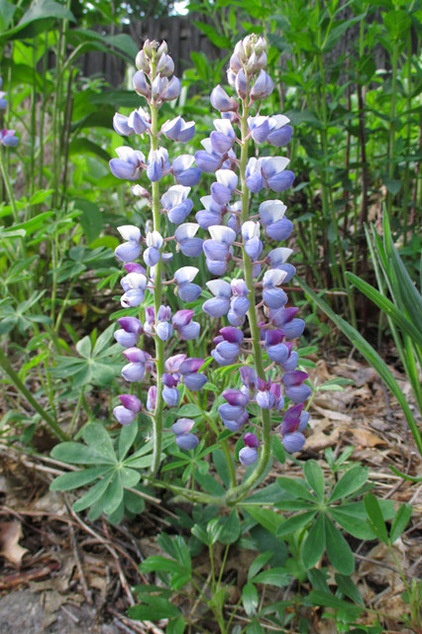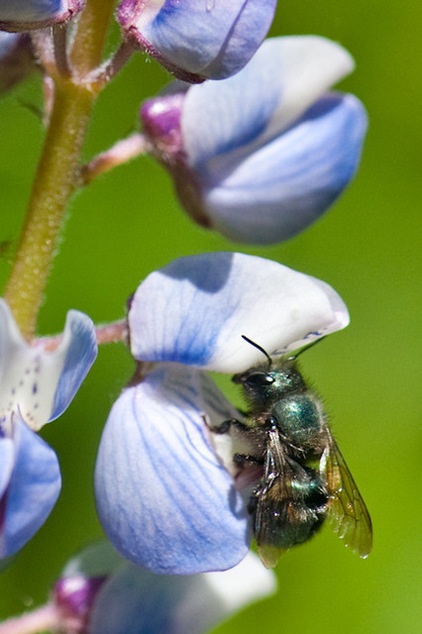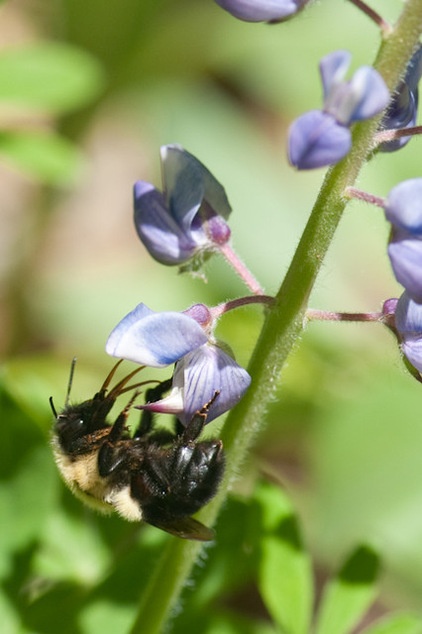Great Design Plant: Wild Lupine Dresses Up Rocky Gardens
http://decor-ideas.org 06/20/2014 23:03 Decor Ideas
Wild lupine puts on an outstanding, colorful display from May to June in the northern U.S. states (earlier in the southern ones). It also fills an important void left after the first wildflowers finish blooming in the woods and before the prairies and meadows come alive in midsummer. Look for large female bees visiting the flowers for pollen; the pollen that they collect is combined with nectar from other flowers and stored in their nests to feed their larvae.

Botanical name: Lupinus perennis
Common name: Wild lupine
Origin: Native from Minnesota eastward to Maine in the north and including Ontario, Canada, and south to Iowa, Illinois, Tennessee and eastward. Wild lupine also ranges down the eastern coastal states to Florida as well as the southern states bordering the Gulf of Mexico. This lupine is not the same as the much larger European introduction, large-leaved lupine (Lupinus polyphyllus), that has naturalized in the northern coastal states.
Where it will grow: Hardy to -42 degrees Fahrenheit (USDA zones 2b to 10b; find your zone)
Typical plant communities: Oak savannahs, prairies, woodland edges and pine barrens
Water requirement: Medium to dry well-drained soil; sand to sandy loam
Light requirement: Full sun to partial shade
Mature size: 1 foot to 2 feet tall and 1 foot to 1½ feet wide
Benefits and tolerances: Requires well-drained soil, preferably neutral to acidic pH. May be short lived in soil with a high pH.
Seasonal interest: Wild lupine has attractive palmate leaves and tall flower spikes with blue to purple pea-like flowers in May and June. The hairy seedpods persist throughout the summer, providing additional interest.
When to plant: Spring or fall

Distinguishing traits. Wild lupine, a legume, has nitrogen-fixing nodules on its roots that help improve soil fertility. It thrives best in sandy, well-drained soil. The flowers open from the bottom of the spike upward, providing several weeks of bloom and interest. The early blue flowers fill an important gap in the garden or landscape in early spring where few other plants are flowering.
How to use it. Wild lupine is an ideal native plant to use along the edge of a perennial planting where taller plants won’t compete with it. It also thrives in well-drained, dry rock gardens and boulevards.

Planting notes. Mature plants do not divide well, so the best propagation method is to collect and sow seeds. A mature wild lupine plant produces seedpods that contain several large seeds. The seeds do not require a period of cold stratification and can be sown right away in pots or in the ground when mature. Their large size and uncomplicated sowing requirements make them an ideal plant for children to sow (and handle).
The seeds do require scarification (scratching of the seed coat). This can be achieved by roughening the seed with some sandpaper. Following scarification, soak the seeds in water for 24 hours, then sow them.
Shown: Mason bees (Osmia sp) are regular visitors to wild lupine flowers.

Pollinator notes. Wild lupine attracts several types of native bees, including bumblebees (Bombus spp), mason bees (Osmia spp) and mining bees (Andrena spp). The flowers require a medium to large bee that has the weight or strength to push down the bottom (keel) petals and expose the pollen. The flowers do not produce any nectar. Once visited by bees, the flowers often change color, and this color change is a visual indicator to subsequent pollinators that those flowers have been already visited.
Wild lupine is an important larval host plant for many butterfly species, but most important for the endangered Karner blue butterfly (Lycaeides melissa samuelis).
More: Gardening for the Bees, and Why It’s a Good Thing
Related Articles Recommended












